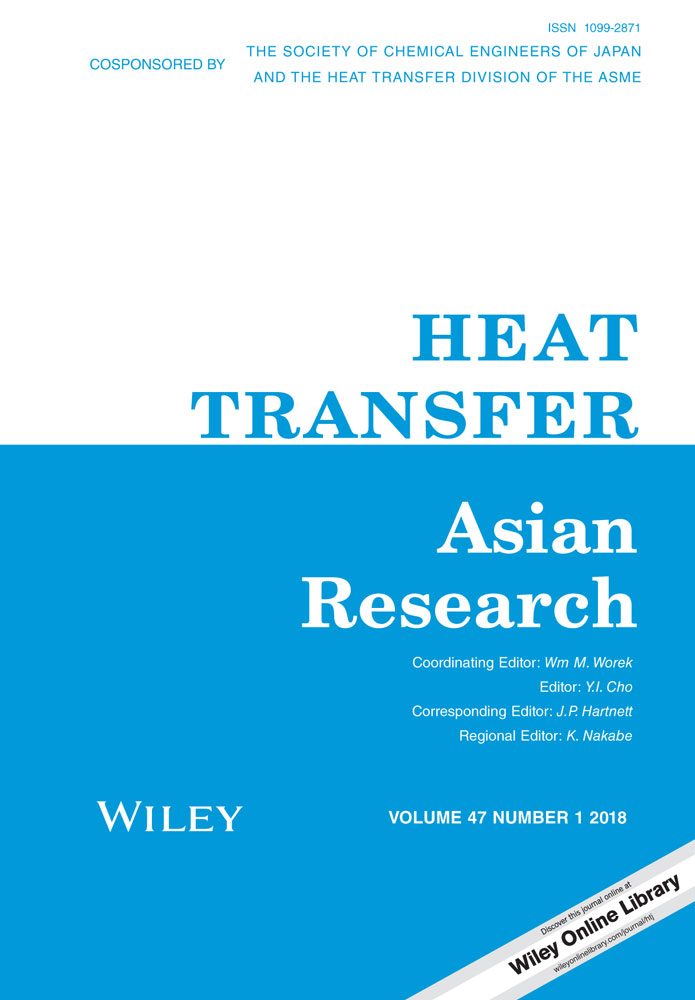On numerical investigation of local Nusselt distribution between flat surface and impinging air jet from straight circular nozzle and power law correlations generation
Abstract
The computational study of heat transfer characteristics over a flat surface under the impingement of an air jet is the most advanced scheme in the research field of convective heat transfer technology. This research aims to construct the semiempirical relations for predicting the magnitude of local Nusselt number (Nu) against the various impinging and target surface parameters. The impinging parameter includes Reynolds number (Re) and nozzle-target spacing (Z/d), while the target surface parameter represents the Prandtl number (Pr) and nondimensional geometric thickness (t/d) of the target surface. The graphical representation of Nu versus r/d for different Pr and t/d justifies the saturation in the Nusselt profile beyond a critical value. The critical limit of Pr × t/d, reported in this study, rounds to 0.012. Hence, two sets of empirical relations for Pr × t/d < 0.012 and Pr × t/d > 0.012 must be defined. The semiempirical relations for Pr × t/d > 0.012 is only a function of impinging parameters, since the variation in Pr and t/d does not affect the Nu profile beyond this range. This work takes an initiative in reporting the semiempirical power law relations, which represent the local Nu magnitude within the range of Pr × t/d < 0.012. The reported empirical relations are the functions of Pr, t/d, Z/d, Re, and r/d.




